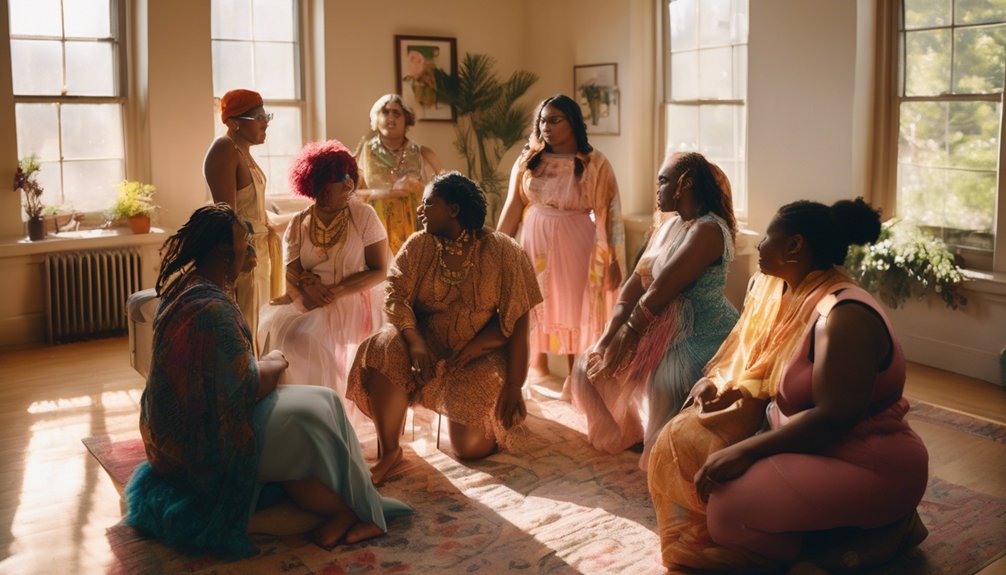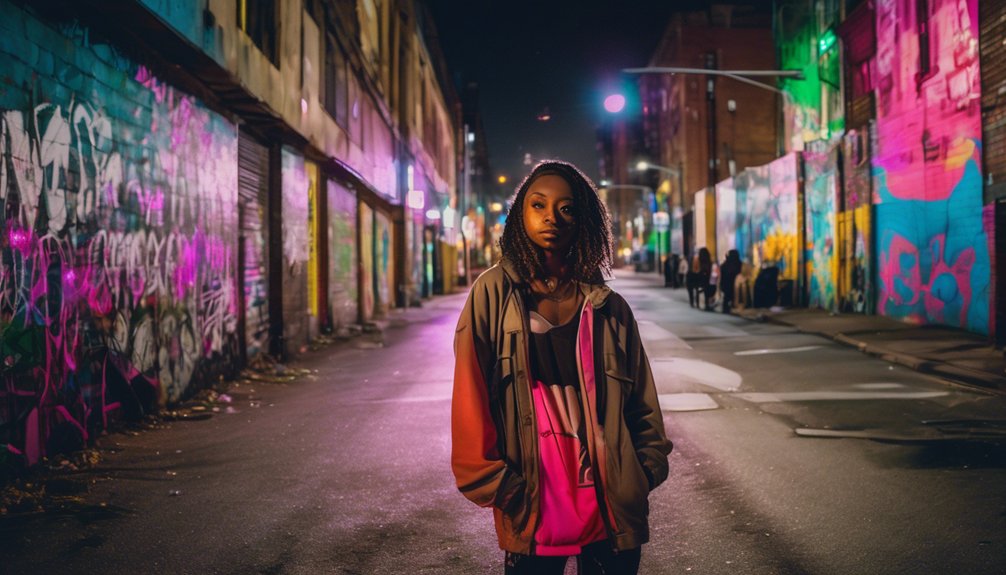Dismantling Fear: Reframing Trans Bodies and Identity


Table of Contents
ToggleWhen you confront your assumptions about trans bodies and identities, you challenge the fear that often underpins societal rejection. These fears aren’t born in a vacuum—they’re shaped by cultural norms and misinformation that frame difference as danger. By actively questioning these narratives, you open space for a more nuanced understanding of gender as fluid and diverse. But how do you dismantle deeply ingrained biases without reinforcing the very stigmas you want to erase?
Reframing transgender identity and bodies requires dismantling the fear-based narratives that pathologize and misrepresent trans people. These narratives, shaped by cultural bias and negative media portrayals, can cause significant psychological distress and isolation for trans individuals. By centering trans voices and adopting affirming perspectives, it is possible to challenge transphobia and foster a more empathetic and accurate understanding of gender diversity.
Much of the societal fear surrounding trans bodies and identities is rooted in cisnormativity, the assumption that everyone is, and should be, cisgender. This bias has historically created and reinforced harmful narratives:
Internalizing society’s fear-based narratives can lead to severe psychological harm for trans individuals. This is known as gender minority stress, a concept that highlights how chronic stress from discrimination leads to adverse health outcomes.
Reframing trans bodies and identity is an ongoing process that requires diverse strategies, from individual actions to systemic change.
By moving away from fear and toward an ethic of empathy, education, and affirmation, it is possible to dismantle transphobia and create a more inclusive world where all individuals can live authentically.
Although you might not always recognize it, transphobia stems from deep-rooted societal fears about gender nonconformity, shaped by historical ignorance and rigid cultural norms that demand strict adherence to binary gender roles. You observe, transphobia is less about individual prejudice and more about collective societal fear—a reaction to anything that challenges established norms. Religious doctrines and cultural beliefs often label trans identities as unnatural, intensifying this fear. Media’s frequent dehumanizing portrayals only deepen misunderstandings, reinforcing stereotypes that heighten discomfort with gender diversity. Political narratives amplify these fears by framing trans people as threats to social order, which justifies exclusion and discrimination. To dismantle transphobia, you must critically examine these societal structures and recognize that fear of difference fuels much of the hostility toward trans bodies and identities.

When you confront common fears about trans people, you quickly realize they often arise from misinformation and a lack of exposure rather than reality. These fears—like concerns about safety or false beliefs that trans identities signify mental illness—reflect societal ignorance, not the lived trans experience. Media frequently reinforces these misconceptions by focusing on sensationalism, which dehumanizes trans individuals and distorts public understanding. Instead, recognizing gender diversity as a natural human variation challenges these unfounded fears. Studies confirm that visibility and education dismantle stereotypes, fostering empathy and inclusion. So, when you engage critically with these misconceptions, you acknowledge how systemic biases shape fear, and you help reframe trans bodies and identities beyond reductive myths.

Because transphobia targets the very core of identity, it inflicts profound harm on individuals and society alike. When you face transphobia, it doesn’t just threaten your sense of self; it heightens risks of violence, mental health struggles, and even suicide. Society’s rejection manifests in barriers to healthcare, legal recognition, and social support, isolating you further. The media’s negative portrayals and stereotypes feed these attitudes, reinforcing exclusion and dehumanization. Understand that transphobia stems from fear of gender non-conformity, upholding rigid social norms that perpetuate systemic inequality. On a broader scale, this intolerance stifles diversity and obstructs social progress toward equality. Recognizing these impacts is vital to dismantling the oppressive structures harming both trans individuals and the society that marginalizes them.
To effectively engage and educate others about trans experiences, you need to move beyond confrontation and instead foster genuine understanding through empathy and dialogue. Use empathetic storytelling to humanize the transgender experience, enabling others to relate beyond stereotypes. Correct misconceptions with clear, evidence-based information on gender identity science and legal rights, avoiding jargon that alienates. Emphasize shared values like fairness and safety to bridge divides with skeptics, creating common ground rather than opposition. When encountering transphobic remarks, respond calmly, explaining how such comments perpetuate harm and misinformation. Encourage open-ended questions that prompt reflection on personal biases and societal norms, cultivating empathy and acceptance. This strategy reframes trans bodies and identity not as threats but as integral facets of human diversity worthy of respect and understanding.
Although medicalisation offers essential pathways to gender-affirming care and social validation, it also frames trans identities within diagnostic criteria that can feel restrictive or stigmatizing. You, as part of the trans community, navigate a terrain where medicalisation legitimizes your experience through the DSM-5’s “gender dysphoria” diagnosis but risks pathologizing authentic identities. While this shift from “gender identity disorder” to “gender dysphoria” aims to reduce stigma by focusing on distress, it still enforces gatekeeping and binary norms. You might strategically engage with medical authority to access care and recognition, yet also resist or critique these frameworks that can confine your lived realities. Understanding medicalisation’s dual role is fundamental to reclaiming empowerment while challenging its limitations within trans narratives.
You can support trans rights by actively engaging with the community, listening to diverse voices, and amplifying their experiences. Don’t just be a bystander; participate in discussions and challenge harmful narratives. Push for policy advocacy by demanding inclusive laws that protect trans identities. Remember, allyship requires ongoing reflection and action. It’s about dismantling systemic fear and creating spaces where trans bodies and identities are respected and affirmed every day.
Language acts as the key opening authentic identity, and you hold it. By choosing affirming terminology, you offer linguistic validation that challenges erasure and marginalization. Every pronoun you use, every name you honor, reshapes social narratives and power structures. Your words don’t just communicate—they construct realities where trans identities thrive. So, wield language critically and inclusively, knowing it’s a tool that either confines or frees, depending on how you use it.
You’ll notice cultural stereotypes and societal norms shape how transgender people are perceived worldwide. In some cultures, rigid gender roles fuel misunderstanding and exclusion, while others adopt fluidity, challenging binary constructs. These differences highlight how deeply norms influence acceptance or fear. By critically examining these frameworks, you can better understand and challenge oppressive narratives, fostering a more inclusive and theoretical approach to transgender identities across diverse cultural landscapes.
You might think art and media can singlehandedly transform every mind overnight, but their influence on positive views of trans experiences is powerful and nuanced. Visual representation and media representation shape societal narratives, challenging stereotypes and fostering empathy. When diverse trans stories appear authentically, they disrupt harmful norms and invite critical reflection. You hold the power to demand media that includes all identities, pushing culture toward inclusivity and deeper understanding through thoughtful, thoughtful portrayal.
You’ll often encounter myths about non-binary identities rooted in gender stereotypes, like thinking non-binary people are just confused or attention-seeking. Another common misconception involves medical assumptions—that non-binary folks must pursue specific treatments to be valid, ignoring diverse experiences. These myths reduce complex identities to narrow expectations, overlooking how non-binary individuals challenge binary norms. It’s essential you question these stereotypes and recognize the fluidity inherent in gender beyond rigid categories.
You can challenge fear by questioning ignorance, dismantle prejudice by embracing empathy, and replace stigma by celebrating authenticity. You can amplify trans voices, confront harmful norms, and foster understanding through education. You can see trans bodies as natural, trans identities as valid, and gender diversity as vital to our shared humanity. By doing these, you don’t just change minds—you transform society, paving the way for true inclusion, justice, and equality for all.
 Featured PostsOctober 25, 2025Fleeing Home: The Reality Behind Transgender Americans’ Search for Safety
Featured PostsOctober 25, 2025Fleeing Home: The Reality Behind Transgender Americans’ Search for Safety Fashion and ExpressionOctober 25, 2025First Time With Lip Filler? Here’s What to Expect
Fashion and ExpressionOctober 25, 2025First Time With Lip Filler? Here’s What to Expect Featured PostsOctober 24, 2025After Facial Feminization Surgery: A Guide to Recovery and Beyond
Featured PostsOctober 24, 2025After Facial Feminization Surgery: A Guide to Recovery and Beyond Activism and ChangeOctober 24, 2025From Policy to Practice: HR's Role in Supporting Trans Employees
Activism and ChangeOctober 24, 2025From Policy to Practice: HR's Role in Supporting Trans Employees